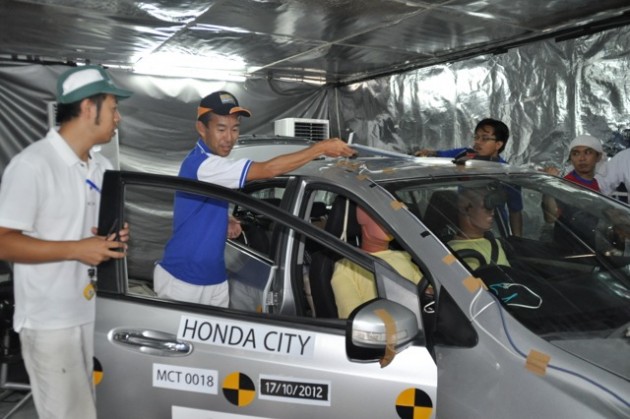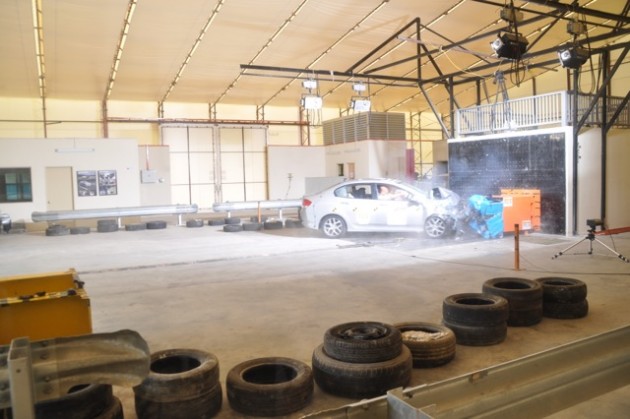Honda Malaysia recently provided a new Honda City for the Malaysian Institute of Road Safety Research (MIROS) to run the ASEAN New Car Assessment Programme (ASEAN NCAP) crash test. The first crash test was carried out at the specially built NCAP crash lab in Malacca, where a series of crash tests for sedans and small cars will be undertaken under its Phase I testing.
The crash test speed was recorded at 63.6 km/h. Following this, another City will undergo an official ASEAN NCAP crash test in December, which will further add tenability to the results. The results will be made public on MIROS’ ASEAN NCAP website.
On hand to guide the MIROS team were Yoshiji Kadotani and Tadashi Mashita of Honda’s R&D. Crash test aspects included the placement of dummies, ideal in-car temperatures, mechanics to achieve the desired speed for accurate results and correct cable tension in pulling the cars. Kadotani, Mashita and their team have crash tested more than 20,000 cars.
The body structure of a Honda car is built with G-force Control Technology (G-CON) that helps disperse and absorb the impact of a crash. Passive safety technologies are dual front SRS airbags and three-point Emergency Locking Retractor (ELR) seat belts, while active safety technologies include Vehicle Stability Assist (VSA), ABS, EBD and Brake Assist (BA).
Honda says all its cars meet the UN Economic Commission of Europe (UNECE)’s R94 and R95 regulations for safety standards and crashworthiness.
Looking to sell your car? Sell it with Carro.






















AI-generated Summary ✨
Comments acknowledge Honda Malaysia’s collaboration with MIROS for ASEAN NCAP testing as a positive step towards vehicle safety awareness. Some express appreciation that Honda is showing confidence in their products by participating, contrasting it with other brands that may not prioritize safety testing. There is discussion about the effectiveness of airbags and safety features, with some skeptics emphasizing that safe driving and road conditions are more critical. A few comments criticize local safety standards, question MIROS’s role, or highlight the limited safety features of certain models. Overall, sentiments are mixed but generally recognize the importance of safety assessments and Honda’s efforts, with some opinions highlighting the need for broader safety improvements.